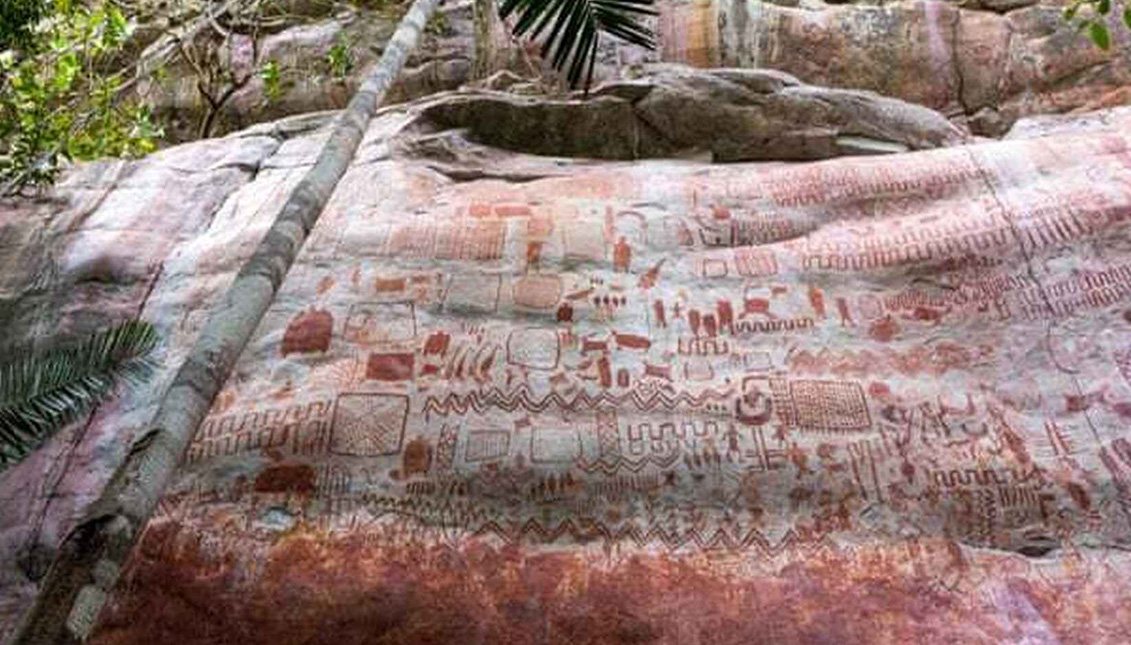
"The Sistine Chapel of the Ancients," the mysterious rock art discovered in the Colombian jungle
Hundreds of thousands of paintings depicting humans and animals were created by Ice Age Da Vincis with an enigmatic and sacred purpose.
The cliffs of the Serranía de la Lindosa in the Colombian Amazon are steep walls surrounded by vegetation as exuberant as it is mysterious. Life, and above all the past, makes its way through this remote jungle where archaeologists have found the largest concentration of cave art in the world.
It comprises tens of thousands of paintings of animals and humans created some 12,500 years ago and have been named "the Sistine Chapel of the Ancients" by their discoverers. Dating the art is possible because of the animals represented, many of which are extinct, such as the mastodon, an elephant-like mammal that disappeared from Latin America at least 12,000 years ago during the Ice Age.
Other animals that exist to this day, such as giant sloths and prehistoric horses, have also been identified.
According to the newspaper, El Español, the discovery was made last year, but has been kept secret to be revealed this December in a documentary series on British television Channel 4 under the title, Jungle Mystery: Lost Kingdoms of the Amazon.
"When you're there, the emotions flow... We're talking about several tens of thousands of paintings. It would take generations to record them all," José Iriarte, director of the research team and professor of archaeology at Exeter University, told The Guardian.
RELATED CONTENT
"We started out seeing animals that are now extinct. The images are so natural and so well done that we have little doubt that we are looking at a horse, for example. The Ice Age horse had a wild and heavy face. It is so detailed that we can even see its hair. It's fascinating," he said.
Other cave discoveries have been made in the area of the Serranía de la Lindosa, but accessing them is not easy. Traditionally dominated by FARC, the trek to the cliff area is made by car from San José del Guaviare, 400 km southeast of Bogotá, and then walking for four hours while on the lookout for alligators.
One of the questions archeologists ask is how some of these paintings could have been made at such a high altitude — they can only be seen with the use of drones. For Iriarte, however, the answer to the enigma can be found in a strange representation of what looks like two wooden towers.
"It is interesting to see that many of these large animals appear surrounded by small men with their arms up, almost worshipping these animals," the researcher concluded, suggesting their ritual purpose.
Although, he admitted, "we are only digging at the surface."











LEAVE A COMMENT: